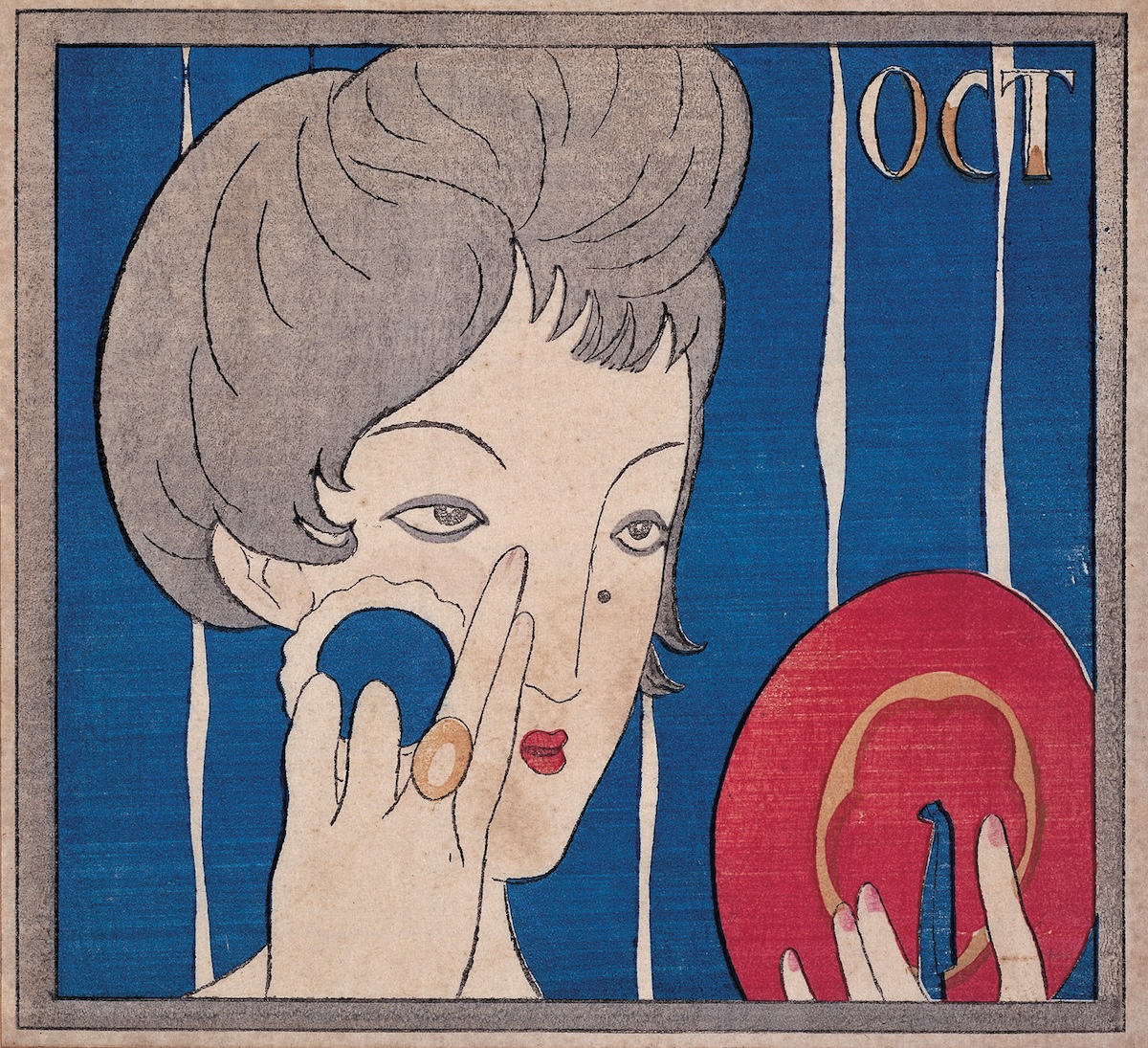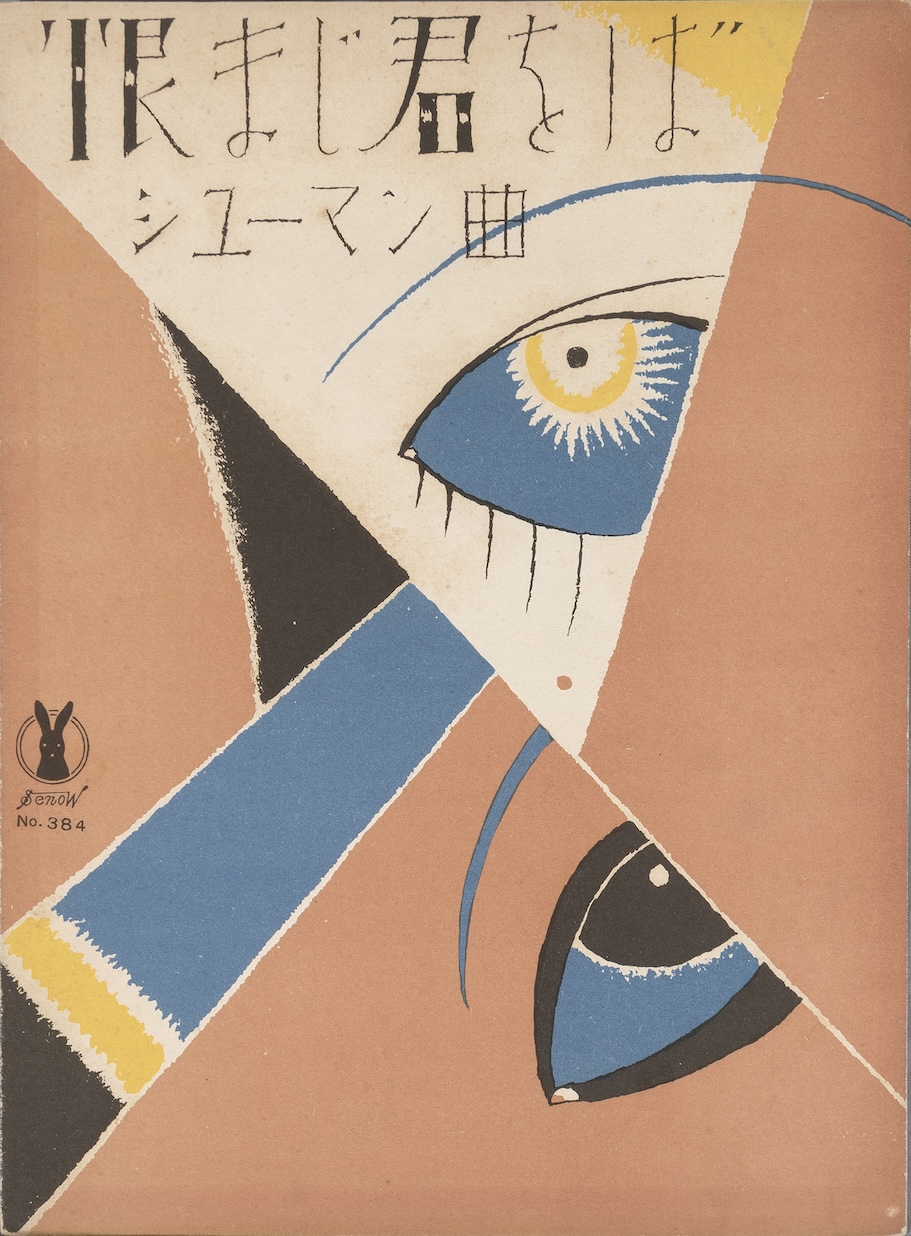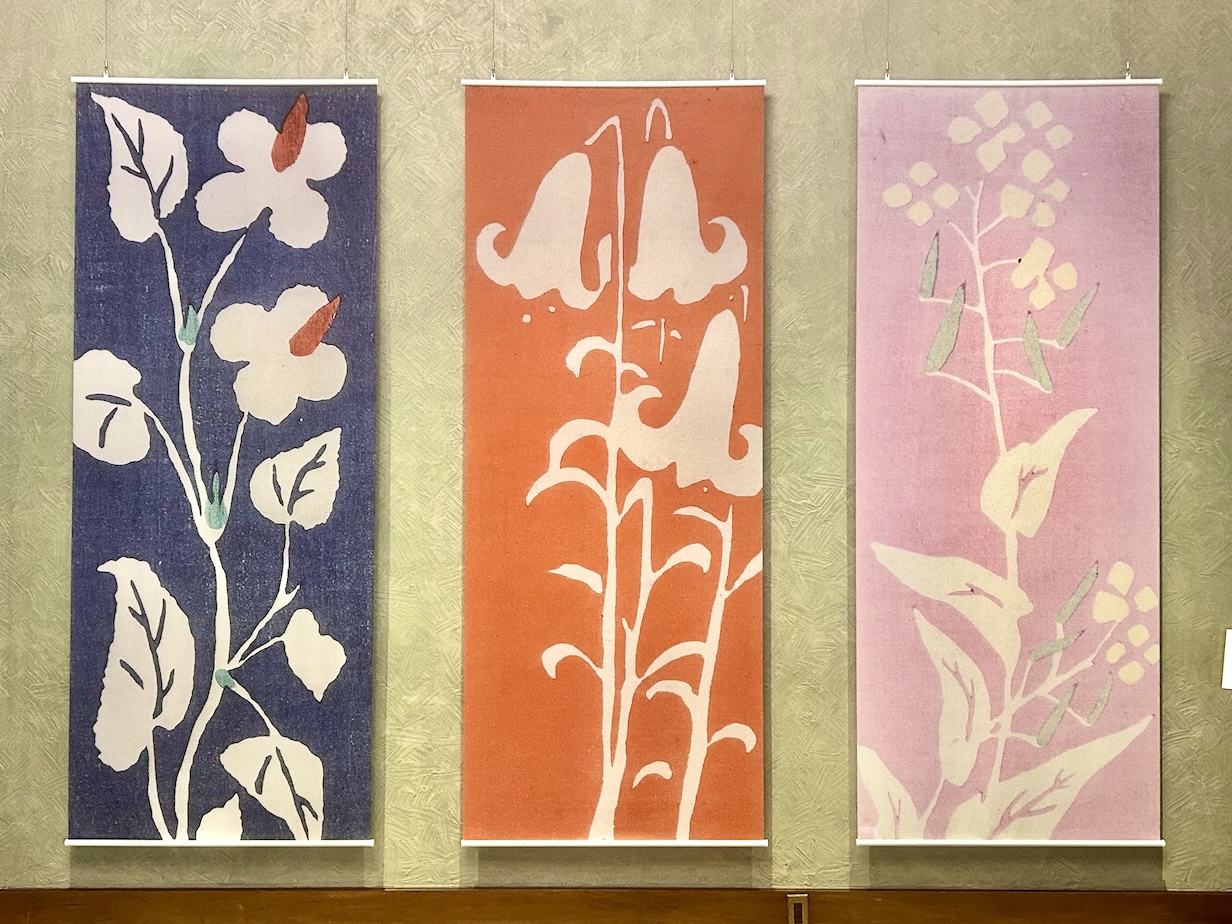TAKEHISA YUMEJI: TAISHO ROMANTICISM AND THE NEW WORLD
HAPPENINGText: Alma Reyes
As a graphic designer, Yumeji created book and magazine cover designs, stationery, postcards, and sheet music covers. Many graphic magazines sprung up in the 1920s with the advancement of photoengraving and printing technology. One of them was Fujin Graph (The Ladies’ Graphic), launched in 1924, that Yumeji designed for profusely.

Yumeji Takehisa, Makeup in Autumn, the Cover of the Magazine The Ladies’ Graphic Vol.1 No.6, 1924, Collection of Yumeji Art Museum
Makeup in Autumn (1924) is a sample of his renditions of the modern woman for this magazine. Envelope designs Houttuynia Cordata (1912-1926), Campanula (1912-1926), and Canola Flower (1912-1926), book cover Collection of Yumeji’s Works (1914), as well as the jacket design for Ich Grolle Nicht from Senow Music Scores (1924) emit delightfully colorful compositions.

Yumeji Takehisa, Ich Grolle Nicht From Senow Music Scores, 1924, First edition, Collection of Yumeji Art Museum
With his rising immense popularity, he opened his first exhibition at the Kyoto Prefectural Library in 1912. The showcase of about 137 works, comprised of oil paintings, Nihonga (Japanese-style paintings), watercolors, and pen drawings, resulted to a tremendous success, attesting the artist’s excellence as a creator. Other solo shows followed, in 1918 at the same library, and in 1919 at the Fukushima Prefectural Assembly Hall.

Yumeji Takehisa, Envelope, Houttuynia Cordata / Campanula / Canola Flower, Taisho era (1912-1926), Collection of Yumeji Art Museum. Photo: Alma Reyes
Yumeji also designed women’s clothing, such as obi and yukata, and accessories. The colors and patterns of the kimono often matched women’s hairstyle looks.
He launched the short-lived Minatoya Ezoshi store in 1914, which carried his stationery line, including chiyogami paper. The products captured luminous flowers and landscape sceneries that propelled the “kawaii” (cute, lovely) phenomenon adored by many young ladies. In time, the terminology has been embedded into the fabric of the Japanese sense of visual aesthetics till today.
Yumeji’s versatile talent credited himself also as a poet. He composed gentle and tender poems and children’s songs. Many suggested feminine qualities, and like his art, swayed with the tempo of love, loneliness, travel, nature, memoirs of past Japan, and dreams of the West.
Visitors can view a special clip of Yumeji’s home, currently the Yumeji Birthplace Memorial Museum, and his exquisite atelier and residence Shonen Sanso in Setouchi City. Yumeji himself designed the green and white atelier in majestic Japanese-Western fashion. The building houses various memorabilia of his life and work. The name Shonen Sanso, literally means “boyhood villa,” and was frequented by Yumeji between his travels in Japan and abroad.
Through Yumeji Beauty, the stature of feminism has ripened the fruits of sensitivity, individuality and personal freedom.
Takehisa Yumeji: Taisho Romanticism and the New World
Date: June 1st – August 25th, 2024
Hours: 10:00 – 18:00 (Last admission at 17:30)
Closed on Mondays
Place: Tokyo Metropolitan Teien Art Museum
Address: 5-21-9 Shiroganedai, Minato-ku, Tokyo
Tel: +81 (0)50 5541 8600 (Hello Dial)
https://www.teien-art-museum.ne.jp
Text: Alma Reyes
Photos: Courtesy of the Yumeji Art Museum





